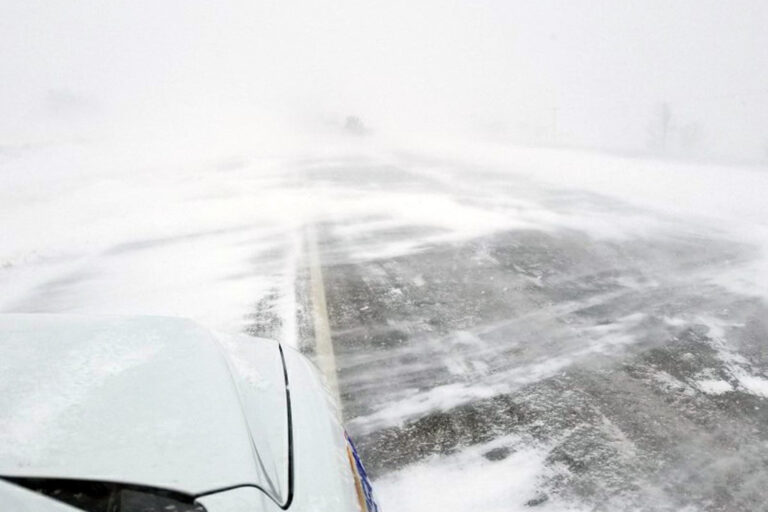
The Saskatchewan RCMP and the CAA are reminding drivers to dig out their winter driving safety skills and prepare their vehicles for the oncoming cold weather, snowfall, slush, and ice.
A few things to remember for drivers when preparing to travel on snow or ice-covered roads:
- Scrape all the ice off your windows before driving, as well as remove all snow from your vehicle, including from your headlights, taillights and roof. Driver visibility is a safety concern if windows are covered with ice and snow.
- Slow down on snowy or slippery roads. Remember that some roads may be more slippery than they appear. Beware of black ice.
- Be gentle and smooth when you accelerate, brake or steer and don’t use cruise control on icy or snowy roads.
- Before traveling, check the weather forecast for both your current location and destination. Allow extra time to reach your destination safely. Be prepared to reduce speeds and drive with caution. Check the Highway Hotline for updates on winter road conditions.
- Slow to 60 km/h on Saskatchewan highways for first responders, including tow truck operators, law enforcement, paramedics, firefighters, and highway construction workers.
- Watch for snowplows, trucks now have amber flashing lights for increased visibility. Remember to slow down, stay back, and stay safe.
- Be prepared for anything: consider stocking your vehicle for the winter with extra warm clothes, candles, matches, non-perishable snacks, a snow shovel, traction mats, booster cables and a tow rope or chain. Take along a mobile phone with a charger for emergencies.
- Turn your vehicle headlights and taillights on in harsh weather and in low visibility. In many vehicles, the daytime running lights are always on. But this doesn’t mean that the rear lighting is on which results in ‘Phantom Vehicles’ that are virtually invisible from behind because their rear lights aren’t on.
- Allow pedestrians extra time to cross roads safely: Drive with caution in school zones, crosswalks, and intersections. Watch for pedestrians crossing the street, and allow time for them to cross safety.
Not only do drivers need to be prepared for winter road conditions, but so do their vehicles. CAA has provided a checklist to make sure all vehicles are winter ready:
- Winter tires need to be chosen carefully, the different rubber compound in winter tires allows for better traction and control. Consider the tread design, type of rubber, size, and conditions of use.
- Remember to check your vehicle’s tire pressure. The right pressure is important for traction and fuel efficiency. Check the air pressure regularly. Improper inflation can not only be dangerous but can also cause increased tire wear resulting in added costs for replacement tires.
- The battery is your vehicle’s lifeline. Extreme weather weakens the battery so check it often and have it charged if necessary.
- Make sure the block heater cord is not frayed and is in good working condition. Always plug in when the temperature falls below -15°C.
- Remember to check your vehicle fluids. This includes antifreeze, brake fluid, and the window washer fluid, all of which are all vital to safe winter travel.
- Have your brakes inspected thoroughly and service them if necessary. This will help with better braking power especially on icy, snow-covered roads.
- Keep a full tank or at minimum a half tank of fuel. This will help reduce moisture in the gas tank, on top of adding weight to your vehicle.
- For a vehicle winter inspection visit the CAA Car Centre at Regina Battery Depot or any facility that is part of CAA’s Approved Auto Repair Services network across the province.
The CAA says, “In Saskatchewan, we know that our weather can change quickly. Now’s the time to get our vehicles and our winter driving habits, ready for winter.”
